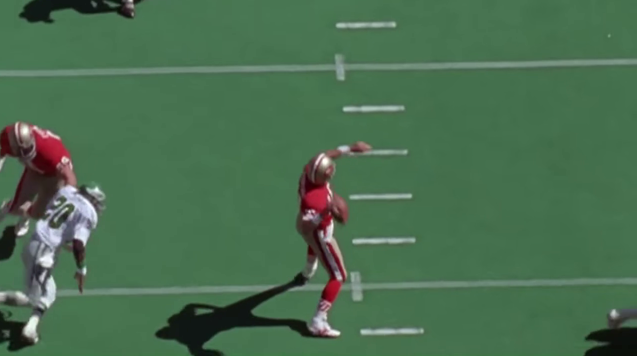
 Copyright © Michael Richmond.
This work is licensed under a Creative Commons License.
Copyright © Michael Richmond.
This work is licensed under a Creative Commons License.
When quarterbacks throw the football, they impart a spin with their fingers, so that the ball spins rapidly as it flies through the air. Football fans call a good pass a tight spiral. (Click on the picture below to watch a video clip)
Q: Why put spin on the ball?
The answer to this question will explain why projectiles of many sorts -- not just balls, but bullets and artillery shells, as well as certain spaceships -- are designed to spin as they fly forward.
Consider a football which does NOT spin as it flies to the right.

Ideally, the ball would maintain this orientation --- pointy end forward -- as it moves. If it can, then it will reduce air resistance, move quickly, and continue moving in the proper direction.
But -- what if a little breeze causes the nose of the ball to tilt down just a little bit?
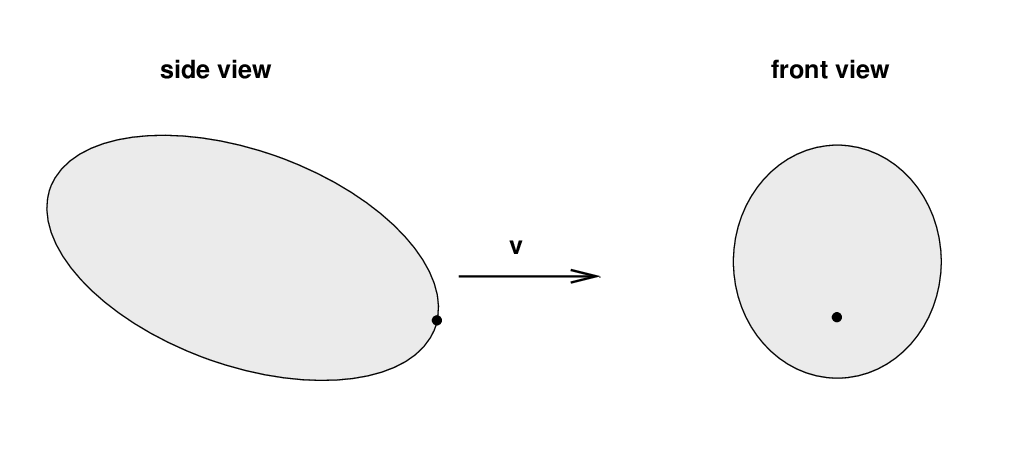
The air resistance on the ball will now push against a larger area on the top side of the ball than on the lower side of the ball. That means that there will be a net force from air resistance pointing DOWN.
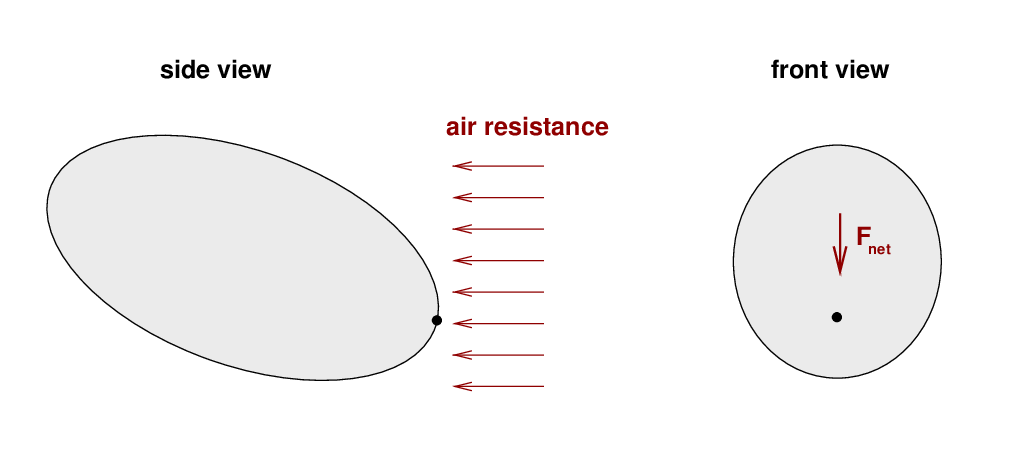
That force will cause the nose of the ball to continue to drop down farther, and the ball will tilt more and more.

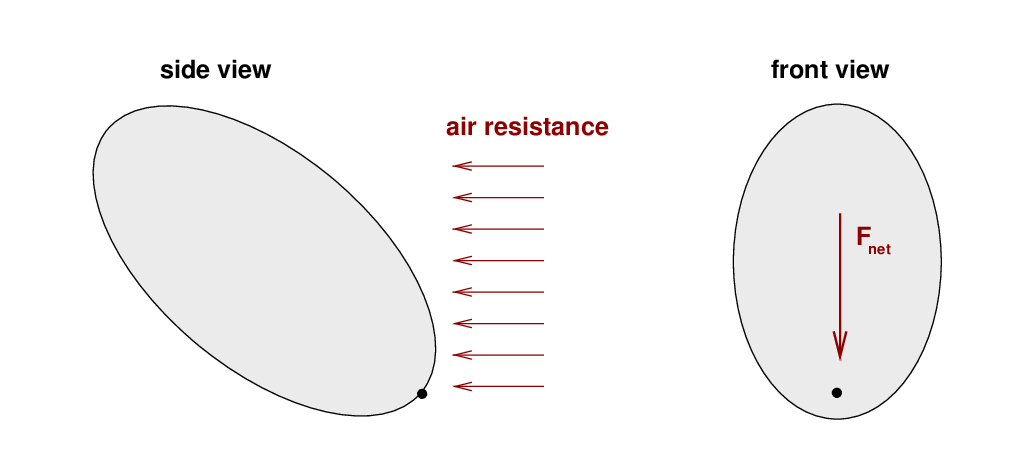
The end result will be a ball (or bullet, or shell) which is moving to the right, but pointing down. The air resistance will become very large, the ball will slow down quickly, and it may even tumble. This is bad.
On the other hand, what if the ball is SPINNING as it moves forward?

In this case, the ball will have angular momentum L.
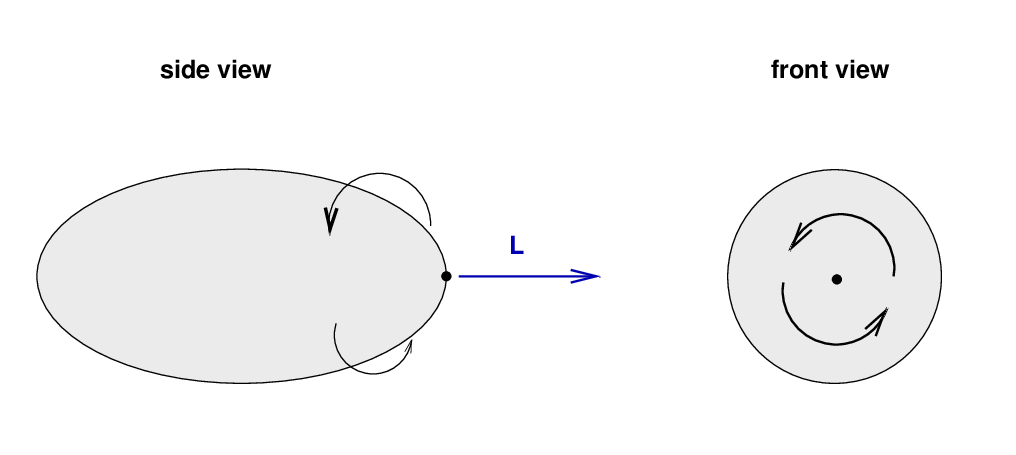
Now, if the ball happens to tilt down a little bit for some reason,
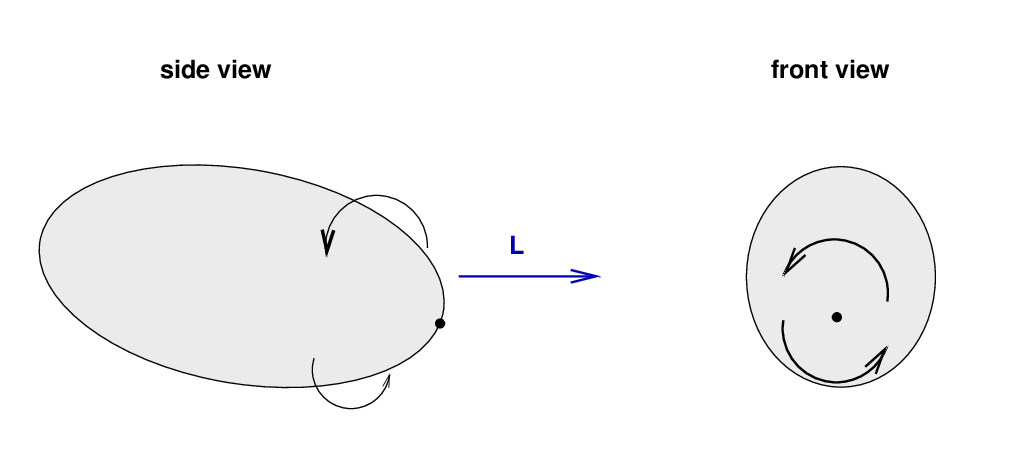
... it will again suffer from a larger air resistance force on the top side than the bottom side. Again, there will be a net force pushing the nose down.
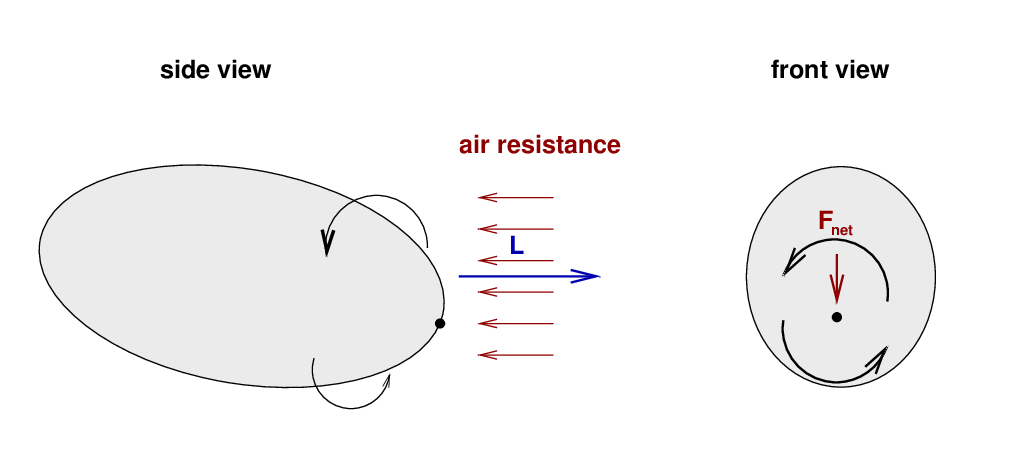
But now, because the ball is spinning, the angular momentum dominates the behavior of the ball. Recall that a change in the angular momentum requires a torque, so we need to compute the direction of the torque due to the air resistance force on the top of the ball.

Q: In which direction does the torque act?
The torque is directed to the RIGHT of the nose, as seen from the front, instead of down.
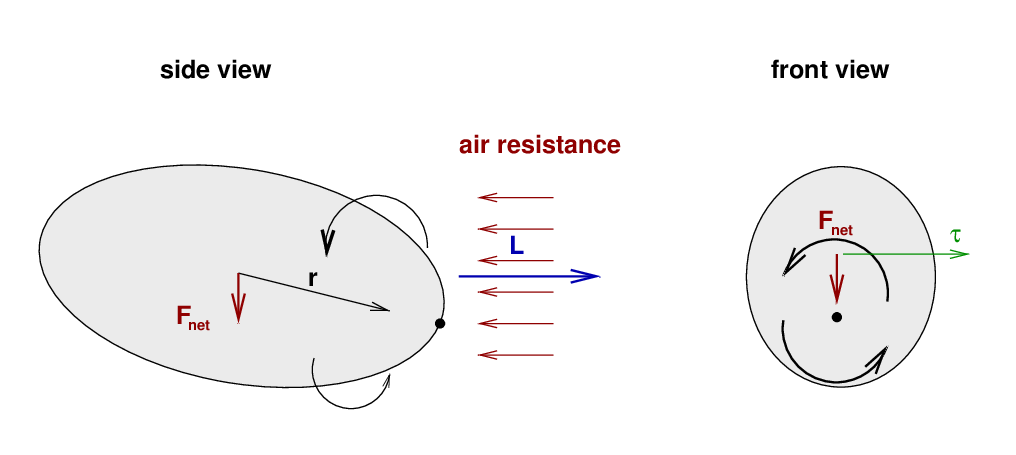
So the angular momentum will change a tiny bit in that direction. Since the angular momentum points the same direction as the nose of the ball, the nose must tilt to the right.
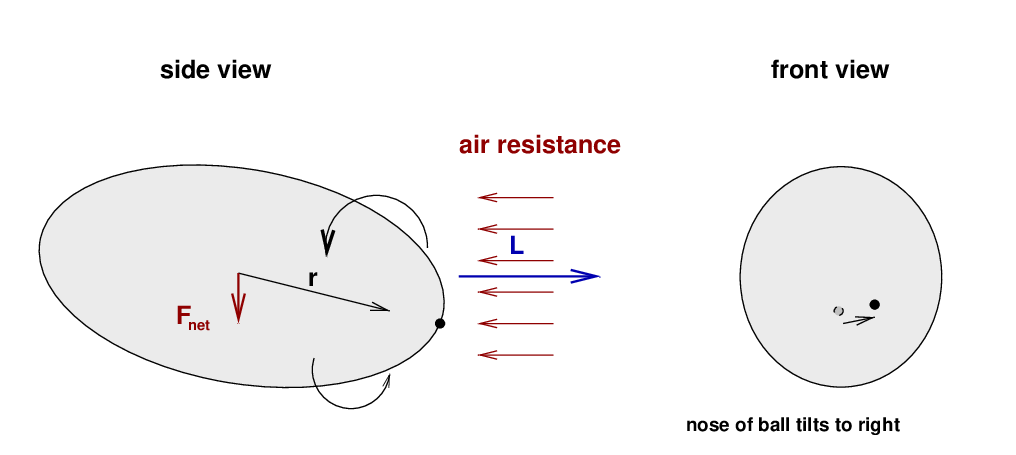
But now, since the nose of the ball as tilted to the right, the net force of air resistance isn't purely down; now, the left-hand side of the ball is more exposed, so the force of the air resistance points to the right as well. And that means tha the torque, which is always perpendicular to the force, must also change direction slightly.

The new torque causes the angular momentum vector (and the nose of the football) to start tilting up and to the right ...
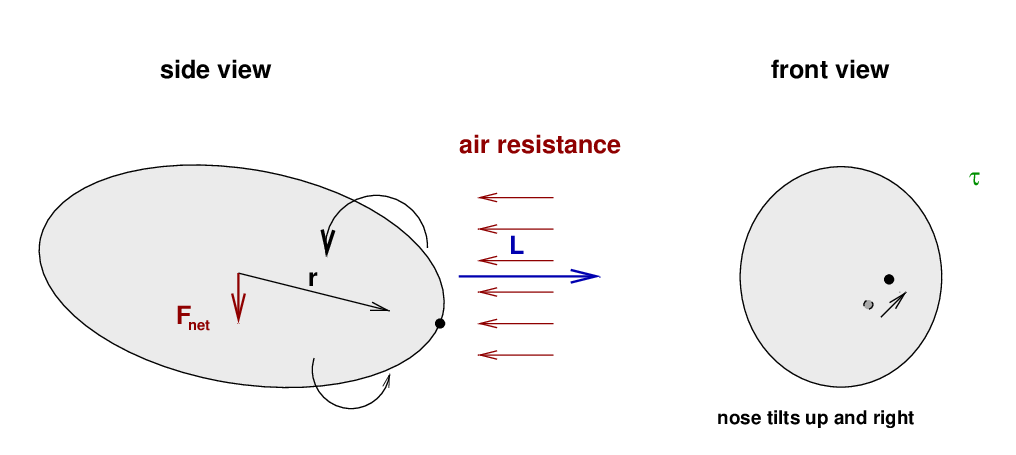
... which causes the torque to change direction again ...

... and the nose to continue to make a little circle around the direction of motion.

We call this PRECESSION. You can see examples in the video clips of football games below.
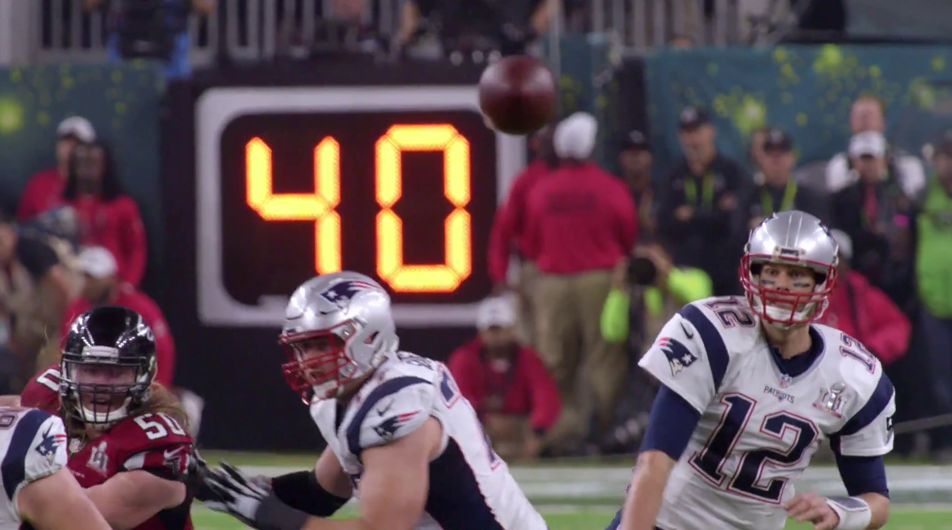
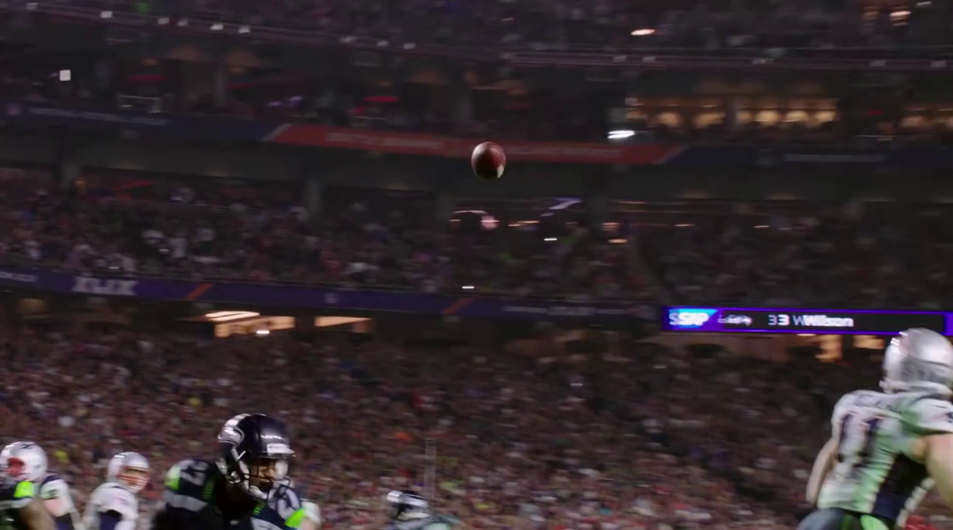
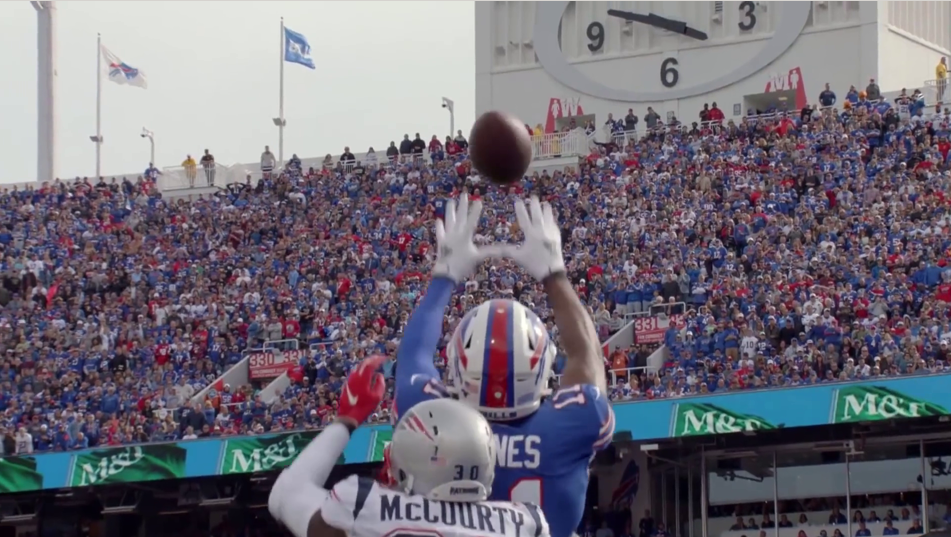
 Copyright © Michael Richmond.
This work is licensed under a Creative Commons License.
Copyright © Michael Richmond.
This work is licensed under a Creative Commons License.